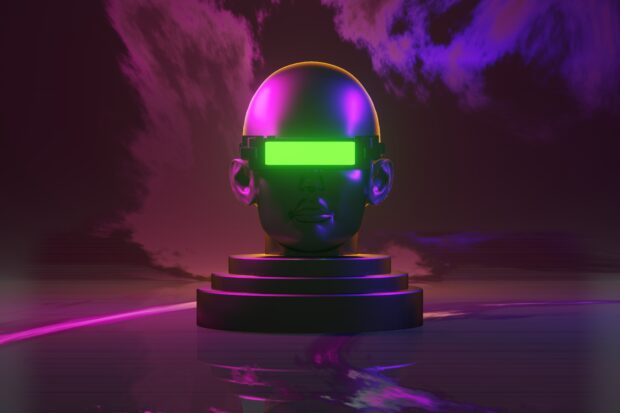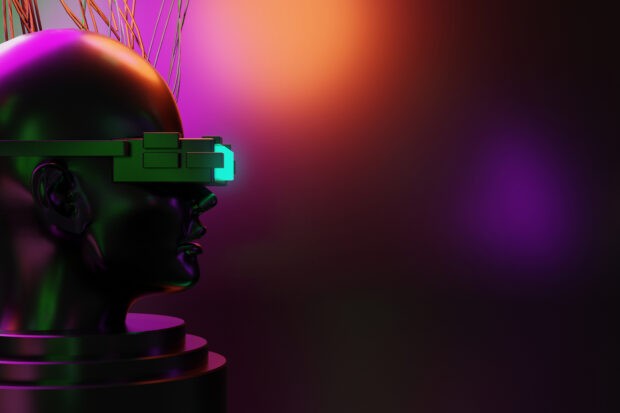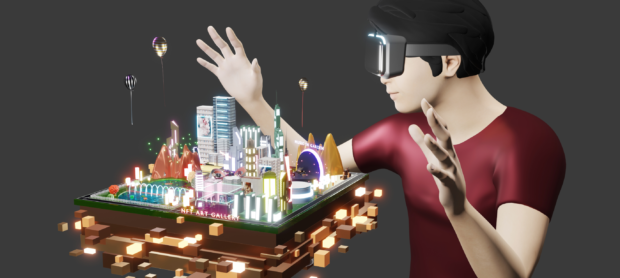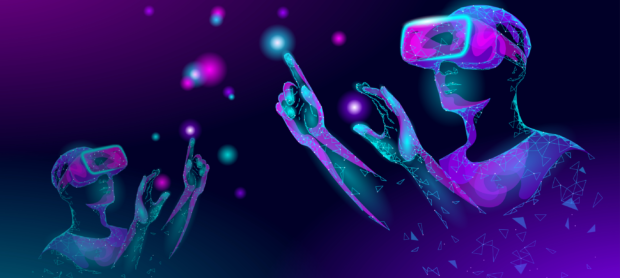Virtual Reality (VR) is one area in particular that has drawn the interest of engineers, gamers, and content producers alike as technology improves at an unprecedented rate. Users of this immersive media may explore and engage with a completely three-dimensional, computer-generated world in real time. VR technology has advanced significantly over the past several years, leading to more complex gear and software that push the limits of immersive experiences.
It is no longer adequate to just replicate the actual world in a digital setting, as the VR environment develops. Creating captivating, immersive experiences that attract people and keep them coming back for more is the focus of today’s technology. The pursuit of such experiences is now organically related to comprehending and using human psychology, perception, and interaction, rather than merely being about attaining technological innovation.
Understanding VR Immersion
Understanding the notion of immersion is the first step in developing engaging VR experiences. Immersion in the context of VR refers to the users’ experience of involvement and presence in the virtual environment. Users get increasingly immersed in the VR environment and lose awareness of their surroundings as the level of immersion increases.
The main draw of VR is its capacity to produce intense degrees of immersion. This special quality sets VR apart from conventional gaming or watching experiences and is a major factor in the rising popularity of VR. It makes it possible to experience “being there,” a virtual reality that seems so genuine that the brain mistakenly accepts it as reality.
It is impossible to emphasize the connection between VR immersion and user experience (UX). Immersion is the key component of the VR user experience; the more immersive an experience is, the more captivating and memorable it is for the user. Users are more engaged and emotionally invested, and view the virtual world as more realistic when they actually feel like they are a part of the VR experience. A higher quality user experience is closely correlated with this improved perspective.
An immersive experience, for instance, might increase the gameplay’s ferocity in a VR game. When players feel as though they are genuinely “inside” the game, the joy of digitally slaying a dragon, scaling a mountain, or exploring foreign regions is tremendously increased. Similar logic holds true for VR training or educational modules, where immersion may significantly improve learning results.


Key Factors in Immersive VR Design
Design is crucial in the field of virtual reality for fostering immersion. This includes a number of important disciplines, including UX/UI design, visual design, and audio design. Each of these components interacts with the others to produce a complete and captivating VR experience.
Designing UX/UI
UX/UI design in VR has a unique format. VR functions in a 3D environment as opposed to flat screens, necessitating special considerations for interface design and interaction techniques.
Intuitive Interfaces: To reduce user annoyance and sustain immersion, virtual world navigation should seem as natural as feasible. This entails developing user-friendly interfaces that are simple to comprehend and utilize. To offer intuitive control mechanisms in VR, methods like gaze-based interactions, normal hand movements, or voice instructions can be used.
Controls simplification: Overly complex interactions or many controls can overwhelm consumers and cause them to lose immersion. Designers should strive to make controls and interaction techniques as simple as possible. This does not imply restricting functionality; rather, it means simplifying it in a way that is easy to understand and effective.
Graphic Design
One of the most important aspects of VR that affect immersion is the visual component. Maintaining the appearance of reality depends on creating a believable visual environment.
Realistic visuals and fluid rendering: An immersive VR experience is substantially more realistic when the graphics are of a high caliber. Every piece contributes to creating a genuine scene, from texturing to lighting. Furthermore, for a seamless experience, smooth rendering is essential. Uncomfortable latency or graphics issues may quickly ruin immersion.
Use of Spatial and Depth Perception Cues: By giving users a feeling of size and distance, effective use of spatial and depth cues can enhance immersion. Implementing parallax or altering how things move, for instance, can enhance the impression of depth and three-dimensionality in a virtual environment.
Sound Design
Although sometimes disregarded, sound is a key component in creating an immersive VR experience.
Role of Spatial Audio: Spatial audio, often known as 3D sound, enhances immersion by supplying auditory clues that correspond with the surrounding environment. Another level of realism is added when users are able to discern the direction, distance, and movement of sound sources inside the VR environment.
Including Realistic Sound Effects and Music: Adding authentic sound effects, background noise, and musical compositions may significantly improve a VR experience’s immersion and emotional impact. Audio is crucial in creating a realistic soundscape, whether it’s the rustle of leaves, a tense musical soundtrack, or the roar of a virtual crowd.


Best Practices for Developing Immersive VR
Now that the fundamental design components have been discussed, let’s move on to the specifics of VR creation. You must comprehend the following recommended practices before working with a VR development company or starting your own VR project.
Selecting the Appropriate Platform and Tools
Comparing Different VR Development Platforms: There are many different VR platforms available today, each with distinct advantages and disadvantages. While PlayStation VR, HTC Vive, and Oculus Rift dominate the premium market, standalone devices like Oculus Quest provide unmatched accessibility. The selection of platform might greatly vary depending on your target audience, the nature of your VR application, and the amount of graphical fidelity you seek.
Choice of Programming Languages and SDKs: Similarly, the choice of programming language and Software Development Kit (SDK) depends on your project requirements and the chosen platform. While C# paired with Unity or C++ with Unreal Engine are commonly used combinations, HTML and JavaScript with WebVR SDK offer a web-based VR solution.
Including Comfort Features for Users
In VR, preserving user comfort is crucial. Discomfort not only interrupts immersion but also may make consumers less likely to use your program again.
Methods to Prevent Motion Sickness and Fatigue: Incorporating methods to prevent motion sickness—like maintaining a high frame rate, providing a static reference point, or using teleportation for movement—can significantly enhance user comfort. Likewise, designing experiences that don’t force continuous, fast head movements can prevent fatigue.
Importance of Customizable Comfort Settings: Customizable comfort settings are crucial since users’ levels of comfort might differ greatly from one another. Users may customize the experience to their individual comfort levels by making use of comfort options that can be adjusted, such as movement speed, field of vision, or control schemes.
Performance Enhancement
In VR development, performance optimization is essential. Any frame rate dips, stutters, or delays can ruin the immersion and make you uncomfortable.
Best Coding Practices for Performance Efficiency: A high and consistent frame rate may be maintained by adhering to efficient coding techniques, such as employing efficient algorithms, managing memory judiciously, and optimizing 3D models.
Importance of Testing and Quality Assurance (QA) in VR Development: Comprehensive testing and QA are crucial for locating and resolving performance bottlenecks. Regular testing on genuine VR devices might reveal insights into difficulties with user comfort and real-world performance.
Conclusion
The importance of continual learning and adaptation in VR design and development cannot be overstated. As technology progresses, new tools, techniques, and possibilities are constantly emerging. To stay ahead, you must stay curious and willing to learn, test, iterate, and innovate.
Whether you’re a novice developer, a seasoned veteran, or an entrepreneur with a groundbreaking idea, there’s never been a better time to dive into the world of VR. And remember, you don’t have to journey alone.
At Eventyr, we specialize in AR/VR development services, bringing together a team of highly qualified professionals ready to work under your control. We can help you transform your idea into a compelling, immersive VR experience that resonates with your target audience. For more information on how we can help bring your VR dream to life, contact us today. Remember, in the realm of VR, the only limit is your imagination. Let’s explore this limitless potential together.




